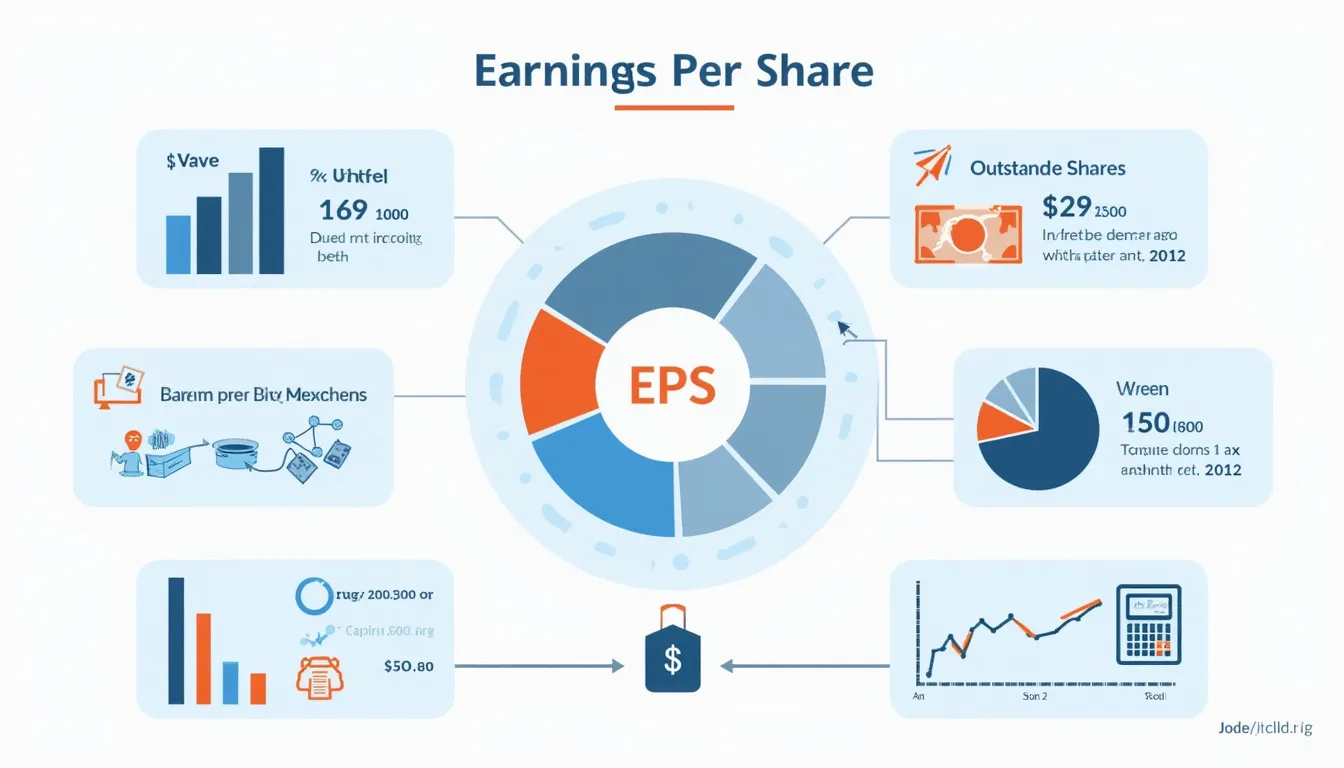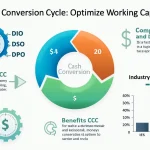Earnings Per Share (EPS) Calculator
Is this tool helpful?
How to use the tool
- Enter net income—type a figure such as $2 300 000 or $15 450 000.
- Enter weighted-average outstanding shares—type counts like 2 750 000 or 6 120 000.
- Click “Calculate EPS”—the result appears below the form, rounded to two decimals.
Formula
$$ EPS = rac{\text{Net Income}}{\text{Weighted Average Outstanding Shares}} $$
Example calculations
- Example A: Net Income =$2 300 000; Shares = 2 750 000 ⇒ EPS = $0.84.
- Example B: Net Income =$15 450 000; Shares = 6 120 000 ⇒ EPS = $2.53.
- Example C: Buyback effect—Net Income =$500 000 000; Shares fall from 120 000 000 to 100 000 000 ⇒ EPS rises from $4.17 to $5.00.
Quick-Facts
- Both basic and diluted EPS must appear on U.S. GAAP statements (FASB ASC 260, 2022).
- S&P 500 median quarterly EPS reached $2.33 in Q2 2023 (S&P Global Market Intelligence, 2023).
- IFRS requires weighted-average shares to adjust for stock splits (IAS 33, 2021).
- Dilution can lower EPS by 5-15 % in tech firms with many options (McKinsey Valuation Report, 2022).
FAQ
What is EPS?
EPS shows profit earned for each common share, a direct rac of net income to share count (SEC Investor Bulletin, 2023).
How are weighted-average shares computed?
Add each period’s shares, multiply by time held, rac by the year—“include stock issues and repurchases” (IAS 33, 2021).
When should I use diluted EPS?
Use diluted EPS when options, warrants, or convertibles could enlarge share count, giving investors a worst-case profit view (Investopedia, 2023).
Does EPS subtract preferred dividends?
Yes. Basic EPS uses net income after preferred dividends, protecting common-share accuracy (FASB ASC 260, 2022).
How do stock splits affect EPS?
EPS and share count adjust proportionally, leaving value per share unchanged (NYSE Market Data, 2022).
Can EPS be manipulated?
Firms can boost EPS by repurchasing shares or altering accounting estimates; analysts check cash flow to verify quality (CFRA Forensic Accounting Guide, 2023).
What is a “good” EPS?
Judge EPS against industry peers and historical trends; S&P utilities average $1.10 quarterly, tech averages $3.05 (S&P Global, 2023).
How does EPS relate to the P/E ratio?
P/E equals stock price divided by EPS; falling EPS inflates P/E, signalling potential overvaluation (Morningstar Equity Handbook, 2023).
Important Disclaimer
The calculations, results, and content provided by our tools are not guaranteed to be accurate, complete, or reliable. Users are responsible for verifying and interpreting the results. Our content and tools may contain errors, biases, or inconsistencies. Do not enter personal data, sensitive information, or personally identifiable information in our web forms or tools. Such data entry violates our terms of service and may result in unauthorized disclosure to third parties. We reserve the right to save inputs and outputs from our tools for the purposes of error debugging, bias identification, and performance improvement. External companies providing AI models used in our tools may also save and process data in accordance with their own policies. By using our tools, you consent to this data collection and processing. We reserve the right to limit the usage of our tools based on current usability factors.







